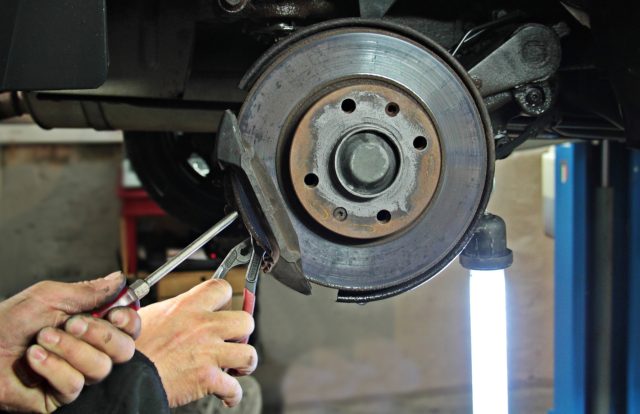Among the most common service provided by independent garages, brake service is also a service category that can bring a customer back, unhappy with excessive noise or poor braking performance.
And, while professional technicians will be practiced in providing excellent service in this area, it is also important to ensure that no steps are skipped.
1. Inspection is the first step to successful brake service. Check brake pads for thickness and evenness of wear, and inspect rotor for runout. parallelism, and thickness to ensure the rotors do or don’t need to be replaced. Also, check for the condition of electronic brake wear sensors which may need to be ordered separately. Uneven wear on pads and rotors may point to a brake balance or caliper problem (to name just two) and should also be noted.
2. Make any recommendations to the service advisor, or directly to the customer if that is the process at your shop. Factors such as evidence of heavy towing leading to a recommendation for severe duty friction or brake dust laden wheels that could benefit from a ceramic formulation, will improve long-term customer satisfaction.
3. Ensure that rotors, even when they’re being reused, are scrubbed clean with soap and water to ensure that the new friction material will have a new surface to contact, reducing noise and ensuring proper braking performance.
4. Caliper performance is critical for the long-term performance of the brake service: all surfaces should be cleaned, hardware should be replaced, slides lubricated with approved high-temp lubricant. Some friction materials will be supplied with a backing plate anti-noise compound that should be applied, others do not recommend its use. Ensure you follow supplier recommendations.
5. Test drives are not only important to ensure brake service has been successful, it is also important for breaking in friction material. Follow brake parts manufacturers recommendations, but most will recommend a series of slow-speed stops (e.g. from 50 km/h), or slowdowns, (e.g. from 80 km/h to 30 km/h), with cool down periods between brake applications. Customer should also be advised to continue this bedding in and avoid unnecessary hard braking for a few days if possible.
Tech Tip inspired by information from Federal-Mogul Motorparts Wagner Brakes brand. Additional information obtained from “Know Your Parts.”
CAN THAT ROTOR BE REUSED?
Beyond the need to ensure that runout and parallelism (taper or dishing) are acceptable, or can be made to be acceptable, there are other factors that should be taken into account in determining whether those brake rotors should be reused or replaced.
Corrosion can be a real enemy for rotors. Cooling fins are particularly susceptible to rust thinning, sometimes to the point of separating the two halves of the rotor. But severely corroded cooling fins signal a rotor that is past its useful life. You should also check for heat cracks that will also cause excessive runout when in operation. Check for any manufacturer specifications on allowable scoring
Specifications ¬provided from the manufacturer typically give a disc ¬diameter, -maximum lateral run-out, parallelism, allowable scoring, etc.
Note: even a new rotor needs to be checked for runout and made true to the hub surface to ensure problem free braking.
CHECK OU THE FULL JANUARY/FEBRUARY INDIE GARAGE LINEUP AND DIGITAL EDITION.


0 Comments